Budapest: the city of sloth
Seven cities for seven deadly sins. Budapest: the sloth
Sloth is the aversion to the act, it is a state of inertia generated by excess of contemplation, but also by listlessness, sluggishness and laziness. In Budapest all this can happen, especially because of two elements that distinguish the city: spas and patisseries.
Unable to resist at the thermal heat of the vice
The thermal baths of Budapest are places of laziness and indolence. The city, as stated in all tourist guides, is the unequalled metropolis in the world full of thermal springs with water temperatures ranging from 21-78 Celsius degrees which spring (about 70 million gallons daily) from nearly 120 sources and natural sinks: is therefore very difficult to avoid the sin of sloth in Budapest.
Even because 4 or 5 star hotels in Budapest do their best to carry on the path of vice the poor tourists, offering the thermal baths directly into the hotel’s spas, or offering agreements with the places of sin in the city: thermal water services and, typically, water therapies are often offered in comfortable and relaxing areas, where indolence and laziness assail the poor unfortunates.
The problem is not easy to solve because Budapest is on a geological fault from which springs spa water: the vice of sloth is old thousands of years in Budapest and affects all age groups. Young people under the guise of health and wellness, spend much of their free time at the spa.
The most famous spas, where the vice flows directly from the earth
Széchenyi Baths (Pest XIV, Állatkerti körút 11)
The largest complex where sin of sloth is also one of the largest in Europe, the Széchenyi Baths in Pest. The station dates back to 1879, but the building that welcomes sinners is most recently (1913). Here the sin takes all the most extreme and old shapes, with large rooms with Roman-style swimming pools, tubs of the Greek tradition and saunas of northern Europe culture. The station is fed by water at 74-77 degrees. The main entrance of the Széchenyi Baths has a room with a dome decorated with an extraordinary mosaic of glass, while fresh mineral water flows in a room nearby.
Gellert Baths (Buda XI Szent Gellért tér 1)
This thermal spring is located at the foot of Mount Gerard, on the banks of the Danube, practically in the center of the city, but surrounded by a park. The building, in Liberty style, welcomes slothful tourists in an environment that is typical of vice, bohemian and Belle Epoque style. The place is noted for its elegance and style, but mainly for its medicinal water and the beautiful outdoor pool with artificial waves. How can you resist?
Rudas Baths (Buda, square Döbrentei 9)
The Rudas thermal baths, located in Buda, date from the mid-fifteenth century. The Rudas retain the shape of aisle with turkish bath, but especially with the waters that feed it coming from 3 major sources and 15 smaller ones. Also called “green columned baths” for the eight columns supporting the central hall, these thermal baths has a large octagonal turkish bath, reserved only to men, placed under a star dome. The Rudas baths, along with the Király baths, are open every other day for men and women, and are places where gay population, both male and female, likes to spend their free time.
Király Baths (Buda II Fo utca 84)
Considered one of the most beautiful, the spa bath of Király retain the ambiance of the first half of the sixteenth century. It is open every other day for men or women and already in the Turkish era was fueled by Lukács baths sources; brought here from pipelines and canals. Construction began in 1565 and in 1796 was significantly modified by the König family that made a particular ambiance with little windows from which filters the sunlight. The most beautiful hall is that with the octagonal swimming pool: the temperature of the thermal baths is 30-39 degrees. An ideal place for inertia and laziness.
Lukacs Baths (Buda II, Frankel Leó ut, 25-29)
From the Middle Ages, the Lukacs baths were refurbished in 1800 with new baths, outdoor swimming pools, whirlpools. From the spa you can access into a natural lake to immerse themselves in hot water and to have mud baths. On the walls are affixed many ex-voto, gratitude plates of patients who have benefited from frequenting the place. The water temperature varies between 21 and 49 degrees. Inside the structure there is a hospital ward, particularly specialized in physiotherapy.
The second source of sloth in Budapest: patisseries
What’s better for a slothful, after getting carried away by laziness and indolence of a thermal bath, that take refuge in one of Budapest’s famous patisseries? And there continue in the vice, to languish in expectation of events? For this reason, Dante forced slothful damned of the fourth circle of hell to run screaming their sins, according to the law of retaliation.That’s why still living people, sitting at café tables of Budapest, can get overwhelmed even by another vice, the Gluttony.
In winter, “shuting” themselves literally in a patisseries or café in Budapest, is a sublime experience. For example, at the Central café, in Károlyi Mihály street, renowned for its elegance; or at the Zsolnay café in Váci street 20, where coffee is served on vintage china; or at the Angelica cafe, in Batthyány square.
But undoubtedly, the favorite place for tourists and citizens is Vörösmarty Square, where there is the most famous pastry shop in the city, Gerbeaud. Symbol place of the vices of sloth and gluttony, Gerbeaud pastry was founded in 1858 when the confectioner Henrik Kugler opened the doors of the patisserie. But the name comes from the second owner, Emile Gerbeaud: the inside of the enclosure is intact with baroque furniture and upholstery vintage. House specialties are the Dobos and Eszterházy cakes, the Kugler pastries and several fruit or yogurt desserts.
Other places of iniquity of the city are: Hauer, in Rákóczi Street, with its ice-cream cakes, syrup fruits, Brody and orange cakes; the Zsolnay Café and Patisserie, with its Ezsterhazy cakes and more than 100 kinds of desserts and 12 specialty of coffee; then, Arpad pastries and the Auguszt Szucs (Kossuth Lajos utca 14-16), small cafe suitable for romantic slothful; the Művész Café, in Andrassy Avenue, with its tea room, adorned with mirrors and statues; Lukacs pastries (Andrassy ut 70), one of the most famous and visited of the city. Finally, near the Royal Palace, in Buda, there is the Ruszwurm Pastry (Szentharomsag ter 7.), with its special cakes and cream pastries: between its old customers even the Empress Sissi.
Photo of Szechenyi thermal bath by karaian

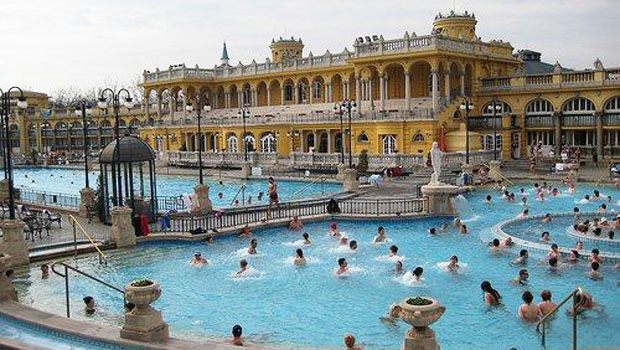

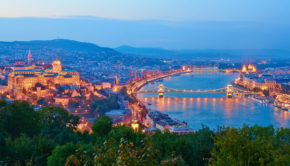
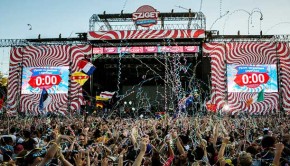
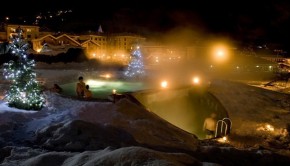
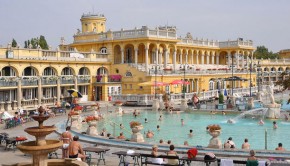





2 Responses to Budapest: the city of sloth